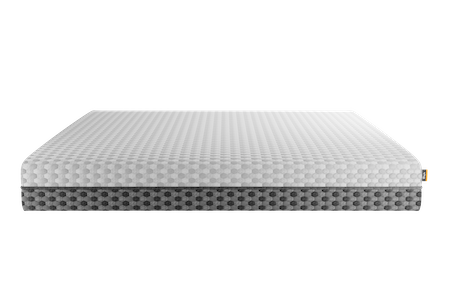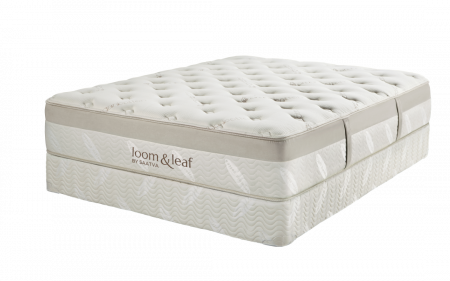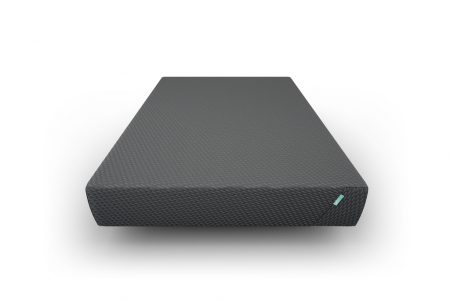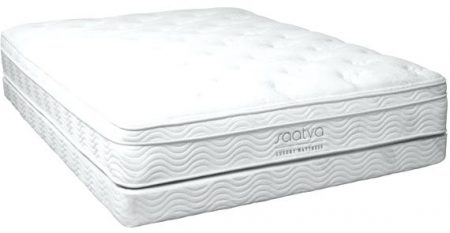How Does Fibromyalgia Affect Sleep?
Fibromyalgia can affect sleep in several ways. Because the condition is associated with widespread pain, patients frequently wake up during the night. This can lead to fatigue and nonrestorative sleep, which leaves people feeling poorly rested the next day. Researchers have noted that, while the average adult experiences roughly five hours of deep sleep per night, fibromyalgia patients do not generally experience any deep sleep for a significant period of time.
Additionally, fibromyalgia can cause sensitivity to hot and/or cold surfaces, which may lead to sleeping hot or cold. Fibromyalgia can also trigger noise sensitivity. People with the condition may wake up more easily during the night whenever people move or adjust positions in bed, or if the mattress contains parts that produce squeaking or squishing sounds.
Fibromyalgia is associated with the following sleep disorders, as well:
- Insomnia: There are two main types of insomnia: sleep-onset insomnia, which causes people to struggle when trying to fall asleep; and sleep-maintenance insomnia, which makes it difficult to remain asleep. There are many causes of insomnia, including conditions like fibromyalgia that can disrupt sleep due to widespread pain.
- Sleep apnea: A significant percentage of people with fibromyalgia live with sleep apnea, a condition characterized by a temporary loss of breathing while asleep. People with sleep apnea may stop breathing hundreds of times during one given night, and treatment often requires use of a CPAP machine. The most common form of this condition is obstructive sleep apnea (OSA), which is caused by a physical obstruction in the breathing passage. Although the connection between OSA and fibromyalgia has not been pinned down, researchers note that men and women with the latter are 10 times more likely to also experience apnea symptoms.
- Restless leg syndrome: Restless leg syndrome, or RLS, is characterized by painful itching or tingling sensations in one or both legs when the individual is lying in bed. Roughly 10% of the U.S. population lives with RLS. Because fibromyalgia magnifies painful sensations, RLS symptoms can lead to significant sleep loss. Roughly half of people with fibromyalgia also have RLS.
Mattress Considerations for People with Fibromyalgia
People with fibromyalgia may want to take the following factors into account when shopping for a new mattress and comparing different brands and models.
Conforming ability and pressure relief: Some mattresses are designed to conform closely to the sleeper’s body and alleviate pain and pressure points throughout the body. These models can be very beneficial for people with fibromyalgia that experience widespread pain.
Firmness: Every sleeper has different firmness preferences, and these often come down to two factors: body weight and sleep position. For example, individuals who weigh less than 130 pounds and prefer to sleep on their side tend to feel most comfortable, while those who weigh more than 230 pounds and sleep on their back may prefer a firmer surface. There is no wrong firmness, per se, but sleeping on a mattress that is too soft or too firm can add to the pain symptoms of fibromyalgia.
Support: In the mattress industry, ‘support’ refers to how effectively a mattress provides a flat, even sleep surface. Mattresses that are too soft or too firm may not be supportive enough for sleepers in certain weight groups. Another factor that affects support is wear and tear — namely sagging in the mattress, which can create an uneven sleep surface that causes sleepers to experience more pain and pressure. According to most mattress owners, sagging that measures one inch or deeper is much more likely to create added pain.
Durability: Durable mattresses will perform for at least six years without excessive sagging or indentations in the sleep surface. Mattresses with below-average durability may begin to deteriorate in as few as two to three years, and the saggy, uneven sleep surface can exacerbate the painful symptoms of fibromyalgia.
Noise: Noise sensitivity is a common symptom among fibromyalgia patients. Mattresses made of certain materials, such as foam or latex, produce little to no noise when bearing weight. These mattresses may be more suitable than other models, such as innersprings, hybrids, and airbeds, which are associated with above-average noise.
Motion isolation: Motion isolation refers to a bed’s ability to absorb motion when someone gets up or shifts position, and isolate this motion to one side of the mattress. Motion isolation is important to people with fibromyalgia because they often experience noise sensitivity, and may awaken easily on a bed that does not minimize motion.
Temperature neutrality: Heat and cold sensitivity is another common symptom of fibromyalgia, and people with this condition may sleep excessively hot or cold as a result. Mattresses with springs tend to have better airflow than those with solid base layers (such as foam and latex models), allowing sleepers to remain cooler throughout the night.
Sleep trial: Many mattress brands and retailers offer sleep trials that last anywhere from 60 to 365 nights in length. In most cases, customers can test out the mattress for the entire duration and return or exchange their bed if they are not satisfied by the end of the sleep trial. People with fibromyalgia can take advantage of sleep trial offers to determine if the mattress they have chosen will work in the long-term.
Warranty: Most mattress warranties include a ‘minimum sagging depth’ to determine whether or not the bed is defective. Some warranties will replace or repair mattresses that sag deeper than one inch, while others adhere to a higher benchmark. People with fibromyalgia may want to prioritize mattresses with warranties that include a minimum sagging depth of one inch or less. Otherwise they may pay a significant amount to repair or replace their mattress for excessive sagging.
What Mattress Types Are Best/Worst for People with Fibromyalgia?
Now, let’s look at the five most common mattress types in terms of their suitability for people with fibromyalgia. The comparison table below evaluates each type for support, firmness, conforming, and other performance factors that matter to fibromyalgia patients.
Additional Strategies for People with Fibromyalgia
People who experience widespread pain as a result of fibromyalgia can further optimize their sleep conditions by carefully choosing their pillows and using an effective mattress topper.
Pillow Selection: For people with fibromyalgia, the most important factor when choosing a pillow is ‘loft,’ or thickness. Using the correct loft can help alleviate pain and pressure in the neck, shoulders, and head, while the incorrect loft can make these issues worse. To determine the best pillow loft, sleepers should take their weight, sleep position, and mattress firmness into account.
Pillows that are popular among people with fibromyalgia and other chronic pain conditions include buckwheat, latex, and memory foam models. Other pillows types, such as down alternative and polyfoam, may increase the amount of pain and pressure that these individuals feel. For more information about pillow soft and selection, please check out Best Pillows: Buying Guide and Information page.
Mattress Topper Usage: The term ‘mattress topper’ refers to a cushioning layer that can be placed in top of a mattress for added softness, comfort, and support. Most toppers are designed to decrease the firmness of a sleep surface, although some toppers can increase the firmness.
For more information on mattresses and bedding accessory options for people with fibromyalgia and other painful conditions that impact sleep, please visit the following pages:
A latex or memory foam topper will be most suitable for someone with fibromyalgia because these products conform closely to target pain and pressure points. Convoluted polyfoam toppers are considered the worst option, since they are associated with increased pain and pressure. To learn more, please visit our Best Mattress Toppers guide.




